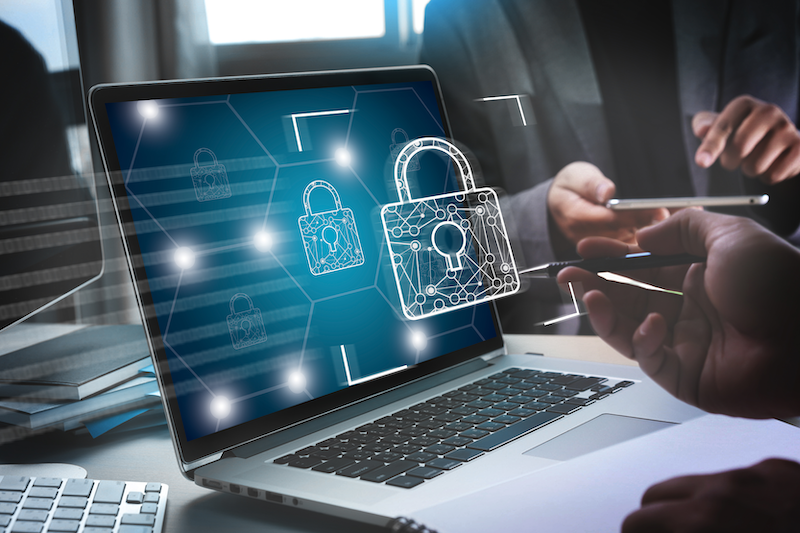Data Destruction Solutions: A Key Element in Your Cyber Security Method
Data Destruction Solutions: A Key Element in Your Cyber Security Method
Blog Article
Exploring the Importance of Data Damage in the Context of Computer System Security Services and Protecting Confidential Information
In an age where data violations are increasingly typical, the importance of efficient information damage can not be overemphasized. When no much longer required, Organizations has to embrace stringent measures to ensure that sensitive info is not only secured during its lifecycle yet additionally emphatically gotten rid of. The methods utilized for information removal, paired with compliance to lawful standards, play a pivotal function in maintaining privacy and trust. Nonetheless, the ramifications of these practices expand past mere conformity, affecting a business's track record and functional honesty in the digital market. What strategies can companies apply to boost their data destruction protocols?
Recognizing Information Damage
Data destruction is a crucial part of computer protection that involves the long-term elimination of data from storage devices to avoid unauthorized access and prospective information violations. In an increasingly electronic landscape, companies face increased threats connected with sensitive details being poorly accessed or made use of. Efficient data devastation safeguards versus these risks, guaranteeing that private dataâEUR" such as customer details, copyright, and economic recordsâEUR" can not be recouped after disposal.
Recognizing the importance of information devastation extends beyond plain conformity with regulative and lawful frameworks; it is crucial for maintaining organizational honesty and trust. When information is improperly managed or improperly ruined, the consequences can be extreme, including monetary loss, reputational damages, and legal liabilities.

Methods of Data Removal

One prevalent approach is information wiping, which involves overwriting existing information with random patterns several times. This technique makes the initial data irretrievable, making it a prominent choice for organizations looking for to protect secret information.
Another method is degaussing, which makes use of an effective magnetic field to interfere with the magnetic domains on storage tools, effectively erasing the information. This strategy is specifically efficient for magnetic media but is not appropriate to solid-state drives.
Physical destruction is an additional durable approach, crushing or involving the shredding of storage space gadgets. This technique warranties that data healing is basically difficult, making it excellent for very delicate details.
Finally, security can work as a corresponding approach to data obliteration. By securing information before deletion, organizations can add an additional layer of safety, guaranteeing that also if residues are recouped, they stay inaccessible without the decryption secret. Each method must be picked based on the degree of information sensitivity and the details safety requirements of the organization.
Legal Conformity and Data Protection
Organizations should browse a complicated landscape of legal demands connected to information security, particularly after implementing techniques of data recommended you read removal. Various guidelines, such as the General Information Security Guideline (GDPR) and the Wellness Insurance Policy Portability and Liability Act (HIPAA), enforce rigid guidelines on how organizations have to take care of and dispose of delicate data. Failing to abide by these laws can result in substantial lawful consequences, consisting of considerable penalties and reputational damage.
Data damage processes need to be diligently documented to demonstrate conformity with appropriate laws and criteria. This documents not just works as proof of adherence to lawful commitments yet additionally illustrates a commitment to securing delicate information. Organizations must additionally establish clear policies concerning data retention and destruction timelines, making certain that data is not held longer than essential.

Moreover, regular audits and analyses of data destruction methods are vital to keep compliance and adjust to developing lawful frameworks (data destruction). By proactively resolving legal needs, companies can reduce threats linked with data violations and demonstrate their commitment to information security. Ultimately, prioritizing lawful conformity in data devastation procedures is not just a governing responsibility, but a basic facet of a robust information safety strategy
Effect on Service Online Reputation
The online reputation of a company can be substantially influenced by its approach to information damage and administration. In today's electronic landscape, where data breaches can occur anytime, the failure to effectively throw away sensitive info can result in serious repercussions. Organizations that improperly take care of data destruction threat revealing personal consumer info, which not only breaches personal privacy regulations however likewise wears down trust fund amongst stakeholders and customers.
A tarnished credibility can lead to lowered Resources client commitment, as customers become reluctant to involve with a company that has actually demonstrated neglect in safeguarding their information. Adverse attention bordering a data breach can have an enduring result, as possible consumers might be discouraged by the regarded lack of protection. This can cause a direct decrease in income and market share.
Moreover, organizations that focus on data destruction as part of their security method can boost their track record by showcasing their dedication to protecting sensitive details. By adopting strict information monitoring practices, organizations can not only minimize risks however additionally position themselves as credible entities in their corresponding industries, therefore strengthening their general brand name picture.

Ideal Practices for Secure Disposal
Applying best methods for protected disposal of data is important for mitigating threats connected with information breaches and making sure compliance with privacy guidelines. Organizations should adopt a comprehensive data disposal policy that outlines treatments for both physical and digital data devastation.
For physical information storage devices, such as hard disks, shredding or degaussing is advised to stop information healing. Additionally, companies need to preserve a chain of custodianship paperwork during the disposal process, ensuring accountability and traceability of disposed products.
For digital data, using software that sticks to industry criteria for data cleaning is important. This software program ought to overwrite existing data several times, making recuperation virtually difficult. It is also essential to validate the performance of the information destruction procedure with audits or third-party assessments.
Educating staff members on protected disposal methods adds an additional layer of protection, as human error can typically lead to data direct exposure. Routinely updating and reviewing disposal plans makes sure alignment with evolving guidelines and technical improvements. By carrying out these ideal techniques, companies can dramatically lower the threat of unapproved information gain access to and improve their overall information defense approach.
Verdict
To conclude, information damage is an essential aspect of computer security solutions that makes certain the defense of secret information from unapproved access. Executing effective techniques of data elimination, sticking to lawful compliance, and identifying the influence on service credibility are necessary parts of a thorough data safety approach. By adopting best techniques for secure disposal, organizations can foster count on with clients and protect sensitive information, eventually adding to a much more secure electronic landscape.
In a period where information breaches are increasingly typical, the significance of reliable information damage can not be overstated.Information damage is an important component of computer system safety and security that entails the long-term removal of data from storage tools to stop unauthorized accessibility and possible information their explanation breaches. Organizations ought to also establish clear plans concerning data retention and destruction timelines, making certain that information is not held longer than required.
By proactively attending to legal demands, companies can reduce threats associated with data breaches and demonstrate their commitment to information security (data destruction). Inevitably, focusing on lawful conformity in information damage processes is not just a governing obligation, but a fundamental element of a robust information safety approach
Report this page